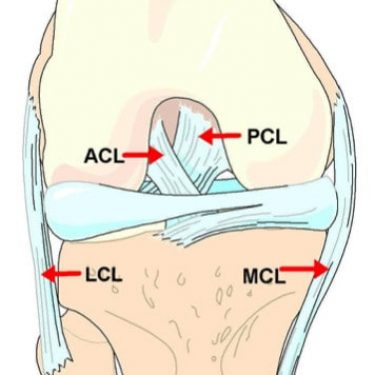Injuries within soccer are very common. Charlie, A physiotherapist from our Campbelltown practice discusses some of the most common soccer injuries which occur throughout the soccer season, including ligament sprains, calf injuries and hamstring injuries, what they are and a little bit about how our team at Core Physio could help treat them for you.
Within soccer, injuries which impact our legs are the most common. Knee injuries in particular are among the most common injuries due to players having to stop, start and change direction frequently throughout training and games. This can lead to injuries such as a ligament sprain or tear, and meniscus injuries. Other common injuries for soccer players include muscle injuries such as calf injuries, tight groins and hamstring injuries (Quinn 2019).
Ligament Sprains or Tears of The Knee
Ligament sprains are common in soccer. Within our knee we have four main ligaments which help to stabilise and support our knee as we move this includes our:
ACL = Anterior Cruciate Ligament
PCL = Posterior Cruciate Ligament
MCL = Medial Collateral Ligament
LCL = Lateral Collateral Ligament
Out of these four ligaments the ACL is the most commonly injured one. There are 3 grades to ligament tears; Grade 1 = mild sprain, Grade 2 = partial tear, and Grade 3 = full tear (Orthoinfo 2014). Depending on the severity of tear will determine your physio’s treatment and course of action. With Grade 1 and 2 our physios will focus on returning the range of motion which you have lost within your knee as well as strengthening the surrounding muscles to help return to sport. We will likely also provide education, stretches and exercises to help prevent an ACL injury from reoccurring.


Calf Injuries
Calf injuries generally occur when there is the need for a sudden burst of speed or power such as sprinting, jumping or changing direction quickly. These movements applies a stretch to the muscles of our calves know as our gastrocnemius and soleus muscles this leads to a minor tear in the muscle. These types of injuries can get worse overtime if left untreated leading to more serious injuries (University of Michigan Health 2020).
Your physio will treat a calf injury initially by helping to reduce the pain which may include rest, ice, compression and elevation as well as hands on treatment such as soft tissue release and massage. Later on in your recovery and rehab the physio will provide you with strengthening exercises for your calves as well as stretches to aid in the prevention and management of your calf muscles.
Hamstring Injuries
Hamstring injuries commonly occur when sprinting or overstretching which then affects the muscles at the back of our thigh known collectively as our hamstrings. We again have three different grades of injury with our minor, partial and complete tears, knowing what grade of injury has occurred helps us to know which course of treatment is going to be best for you (Orthoinfo 2021).
Our physios will address the likely cause of the injury and will then give advice on ways to help prevent a hamstring injury from reoccurring. This advice may include stretching, strengthening and/or addressing fatigue and conditioning of the muscles to ensure for the best results on returning to sport.
This blog was written by Charlie Stewart (Physiotherapist), from our Campbelltown practice.

References
Quinn, E 2019, 15 Most Common Soccer Injuries. Available at https://www.verywellfit.com/common-soccer-injuries-3120651
Orthoinfo 2014, Anterior Cruciate Ligament (ACL) Injuries. Available at https://orthoinfo.aaos.org/en/diseases–conditions/anterior-cruciate-ligament-acl-injuries/
University of Michigan Health 2020, Calf Muscle Injury. Available at https://www.uofmhealth.org/health-library/abq4844#:~:text=A%20calf%20injury%20is%20most,it%20beyond%20its%20normal%20limits.
Orthoinfo 2021, Hamstring Muscle Injuries. Available at https://orthoinfo.aaos.org/en/diseases–conditions/hamstring-muscle-injuries
